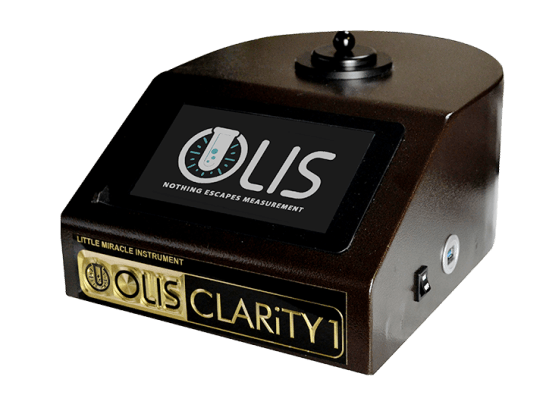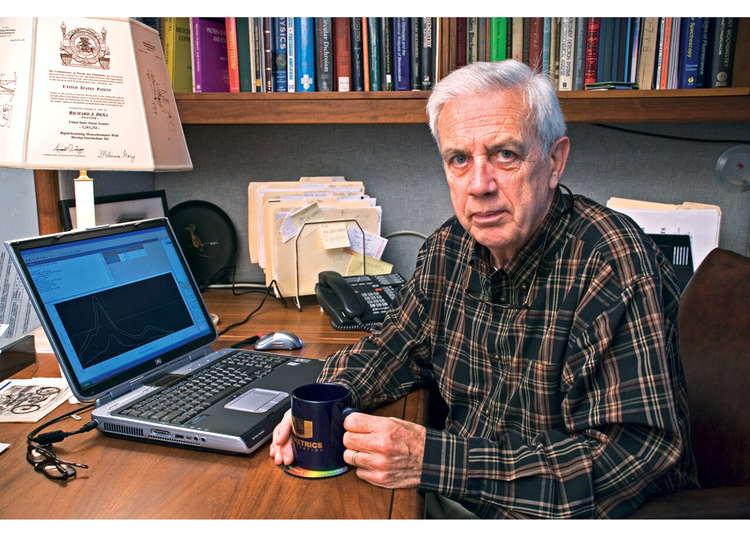Circular Dichroism Fundamentals Explained
Circular Dichroism Fundamentals Explained
Blog Article
The Ultimate Guide To Circularly Polarized Luminescence
Table of ContentsA Biased View of SpectrophotometersCircular Dichroism Things To Know Before You BuyUv/vis - TruthsThe 8-Second Trick For Uv/visThe Ultimate Guide To Uv/vis

Spectrophotometry is a tool that hinges on the quantitative analysis of particles depending on how much light is soaked up by colored compounds.
The Main Principles Of Spectrophotometers
A spectrophotometer is typically used for the measurement of transmittance or reflectance of solutions, transparent or opaque solids, such as refined glass, or gases. Although numerous biochemicals are colored, as in, they soak up noticeable light and therefore can be measured by colorimetric procedures, even colorless biochemicals can often be transformed to colored substances appropriate for chromogenic color-forming responses to yield substances appropriate for colorimetric analysis.: 65 Nevertheless, they can likewise be developed to determine the diffusivity on any of the listed light varieties that usually cover around 2002500 nm using different controls and calibrations.
An example of an experiment in which spectrophotometry is utilized is the determination of the equilibrium constant of a service. A particular chemical response within a service might happen in a forward and reverse direction, where reactants form products and products break down into reactants. At some point, this chemical response will reach a point of balance called a stability point.
The Basic Principles Of Circularly Polarized Luminescence
The quantity of light that travels through the service is indicative of the concentration of particular chemicals that do not enable light to go through. The absorption of light is because of the interaction of light with the electronic and vibrational modes of particles. Each type of molecule has a private set of energy levels connected with the makeup of its chemical bonds and nuclei and hence will take in light of particular wavelengths, or energies, resulting in unique spectral homes.
They are widely utilized in numerous industries consisting of semiconductors, laser and optical production, printing and forensic assessment, as well as in labs for the study of chemical substances. Spectrophotometry is typically used in measurements of enzyme activities, determinations of protein concentrations, decisions of enzymatic kinetic constants, and measurements of ligand binding reactions.: 65 Ultimately, a spectrophotometer is able to figure out, depending on the control or calibration, what substances are present in a target and precisely how much through estimations of observed wavelengths.
Created by Arnold O. Beckman in 1940 [], the spectrophotometer was produced with the aid of his colleagues at his company National Technical Laboratories established in 1935 which would end up being Beckman Instrument Business and ultimately Beckman Coulter. This would come as a service to the formerly produced spectrophotometers which were not able to absorb the ultraviolet properly.
9 Simple Techniques For Circular Dichroism
It would be discovered that this did not provide satisfying outcomes, therefore in Design B, there was a shift from a glass to a quartz prism which permitted much look here better absorbance results - UV/Vis (https://www.magcloud.com/user/olisclarity1). From there, Design C was born with an adjustment to the wavelength resolution which ended up having three systems of it produced
It irradiates the sample with polychromatic light which the sample soaks up depending on its properties. It is transferred back by grating the photodiode variety which detects the wavelength area of the spectrum. Ever since, the development and execution of spectrophotometry devices has increased immensely and has turned into one of the most ingenious instruments of our time.

About Uv/vis
Historically, spectrophotometers utilize a monochromator containing a diffraction grating to produce the analytical spectrum. The grating can either be movable or fixed. If a single detector, such as a photomultiplier tube or photodiode is used, the grating can be scanned stepwise (scanning spectrophotometer) so that the detector can determine the light intensity at each wavelength (which will correspond to each "action").
In such systems, the grating is fixed and the intensity of each wavelength of light is determined by a various detector in the range. When making transmission measurements, the spectrophotometer quantitatively compares the fraction of light that passes through a recommendation option and a test solution, then electronically compares the intensities of the two signals and computes the portion of transmission of the sample compared to the reference standard.

Report this page